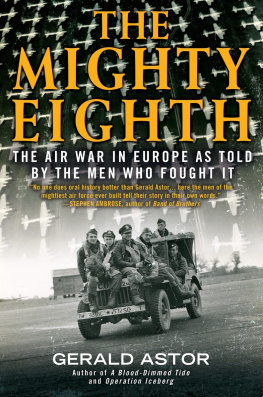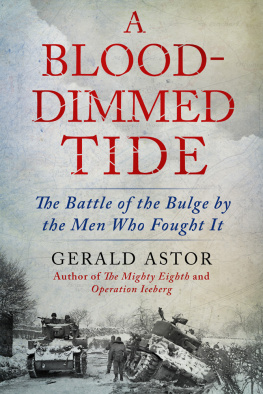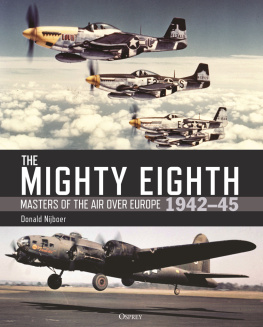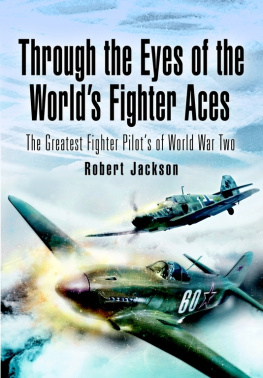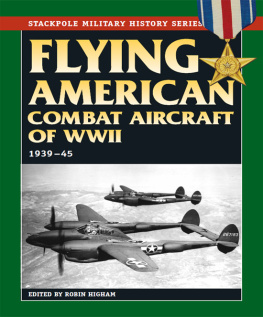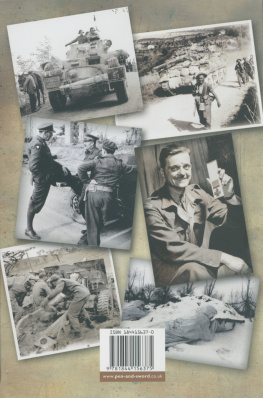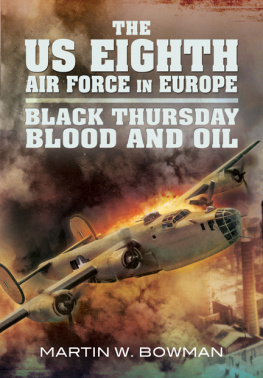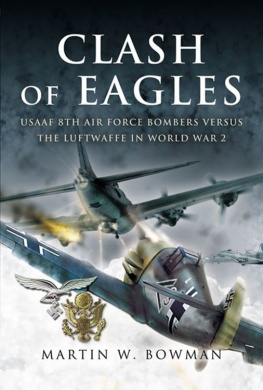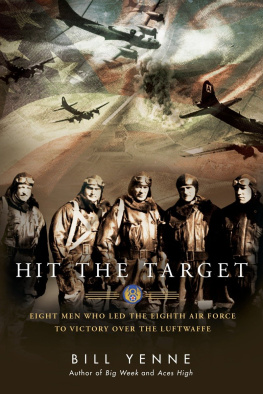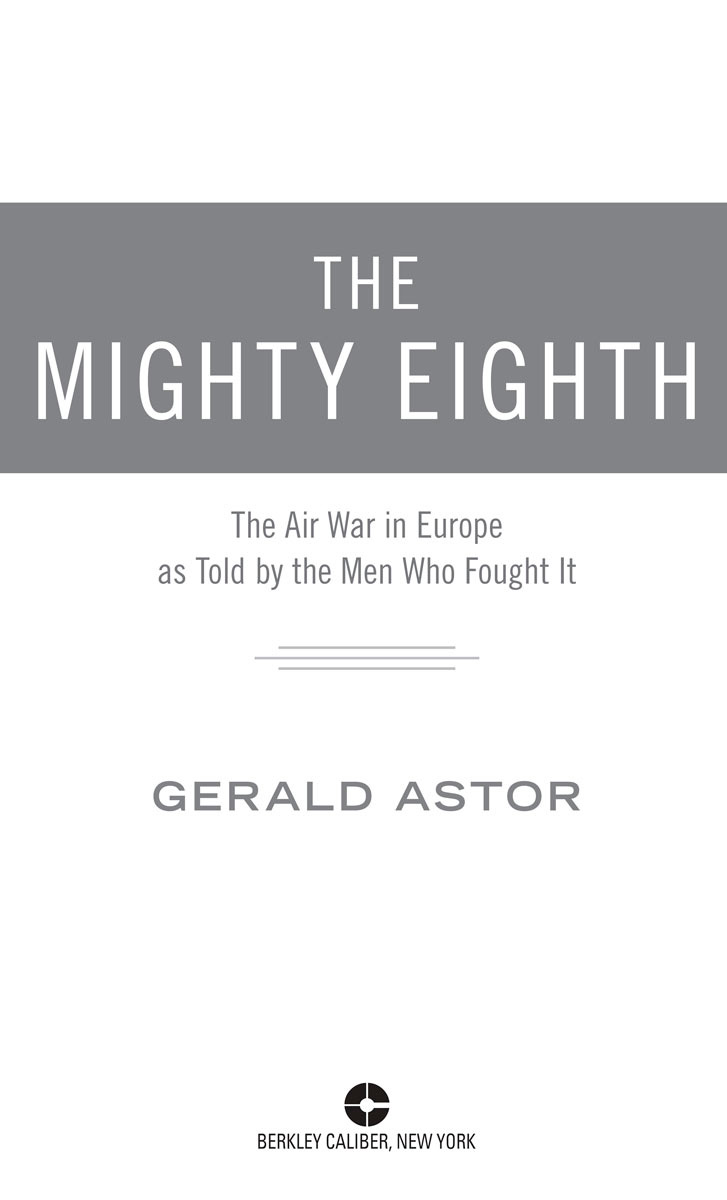PRAISE FOR THE MIGHTY EIGHTH
No one does oral history better than Gerald Astor... here the men of the mightiest air force ever built tell their story in their own wordsof trials, tribulations, triumphs, terror, and tedium.
Stephen Ambrose, author of Band of Brothers
Bold, brawny, epic in scope... Astor captures the fire and passion of these tens of thousands of U.S. airmen who flew through the inferno that was the bomber war over Europe.
Stephen Coonts, author of The Red Horseman
[Astors] many interviews of American airmen turn up some fascinating anecdotes, catching the grim realities of air combat in a way that more conventional strategic histories cannot... Revealing and vivid personal sketches of the quiet heroes in a unit that suffered more lives lost than the entire Marine Corps in WWII.
Kirkus Reviews
The first-person testimony of these courageous men is invaluable in terms of understanding both the process of protracted war and its effect on the human spirit. Their anecdotes are fascinating... Excelling in weaving these stories into a broader analysis of the Eighths role in the air war with Germany, Astor demonstrates once again that hes one of the most accomplished oral historians at work today.
Publishers Weekly
Astor stitches together about a hundred eyewitness experiences of the combat, linking them with a workmanlike narrative of the battles course. Here he presents the saga, frequently disastrous, of American daylight bombing against Germany... Riveting vignettes of dogfights and destruction.
Booklist
Gerald Astor has proven himself a master. Here, World War II is brought to life through the hammer blows of their airborne triumphs and fears. This book should be of interest to anyone who fought that waror any warin the air, and those who want to understand what combat was like for the airmen and their leaders.
J. Robert Moskin, author of American Statecraft
ALSO BY GERALD ASTOR
Wings of Gold: The U.S. Naval Air Campaign in World War II
The Jungle War: Mavericks, Marauders, and Madmen in the China-Burma-India Theater of World War II
The Bloody Forest: Battle for the Hurtgen September 1944January 1945
Crisis in the Pacific: The Battles for the Philippine Islands by the Men Who Fought Them
Operation Iceberg: The Invasion and Conquest of Okinawa in World War II
Battling Buzzards: The Odyssey of the 517th Regimental Parachute Combat Team 19431945
A Blood-Dimmed Tide: The Battle of the Bulge by the Men Who Fought It
The Last Nazi: The Life and Times of Joseph Mengele

An imprint of Penguin Random House LLC
375 Hudson Street, New York, New York 10014
THE MIGHTY EIGHTH
Copyright 1997 by Gerald Astor.
Penguin supports copyright. Copyright fuels creativity, encourages diverse voices, promotes free speech, and creates a vibrant culture. Thank you for buying an authorized edition of this book and for complying with copyright laws by not reproducing, scanning, or distributing any part of it in any form without permission. You are supporting writers and allowing Penguin to continue to publish books for every reader.
BERKLEY CALIBER and its design are trademarks of Penguin Random House LLC.
For more information about the Penguin Group, visit penguin.com.
eBook ISBN: 978-0-698-19712-1
PUBLISHING HISTORY
Dutton hardcover edition / June 1997
Dell mass-market edition / November 1998
Berkley Caliber trade paperback edition / September 2015
While the author has made every effort to provide accurate telephone numbers and Internet addresses at the time of publication, neither the author nor the publisher is responsible for errors, or for changes that occur after publication. Further, the publisher does not have any control over and does not assume any responsibility for author or third-party websites or their content.

Version_1
For those who flew and those who backed them up on the ground, and for Sonia who has been so supportive and given me wings.
CONTENTS
ACKNOWLEDGMENTS
I am foremost indebted to all of those, listed under Roll Call, who graciously shared with me their diaries, accounts, journals, letters home and especially those whom I interviewed. Magda Salvesen allowed me to use portions of the manuscript written by her late husband, Jon Schueler, and also supplied me with a copy of Billy Southworths diary. Don Lopez at the National Air and Space Museum in Washington, D.C., supplied me with names and information. I was also aided by Dr. Walton S. Moody, historian of the Department of the Air Force, and Yvonne Kinkaid, the librarian who made available material from the USAF library at Bolling Field, Washington, D.C.; John Correll, editor of Air Force magazine, and Pearlie M. Draughn, research librarian of Air Force, provided counsel and reprints. Lois Harrington of the American Air Power Heritage Museum in Midland, Texas, supplied me with copies of oral histories from a number of Air Corps veterans. The United States Army Military History Library at Carlisle, Pennsylvania, was as usual helpful through its archives and Dr. Richard J. Sommers.
A number of people put me in touch with additional sources. These include: Mary Beth Barnard, director of history and archives at the Mighty Eighth Air Force Heritage Center, Jim Hill, editor of the Eighth Air Force newsletter, Ralph Rosensteel of the 92nd Bomb Group Association, Harry Alsaker of the 97th Bomb Group Reunion Association, Jim Clements of the 44th Bomb Group Association, Harry Crosby of the 100th Bomb Group Association, Lt. Col. Robert D. Elliott, USAF Ret., of the 92nd Bomb Group Association, Col. C. V. Glines, USAF Ret., and an authority on the Air Force, John Gray who served with Eighth Air Force Headquarters during World War II. George Hruska, editor of the 385th Bomb Group newsletter, Ollie Joiner of the 364th Fighter Group Association and Aida Kaye of the Eighth Air Force Historical Society, Edward Kueppers Jr. of the Eighth Air Force Historical Society, C. Will Lundy of the 2nd Air Division Association, Eric Nord Gilbertson, a World War II aviation buff, and Matt Clark, a former colleague in magazine journalism.
PREFACE
Rummaging through the attic of World War II in search of oral and eyewitness history one realizes that the amount of material about what was then the U.S. Army Air Corps far exceeds the collections of any other military branch. There are several reasons for this volume of information. Because the roles of pilot, navigator and bombardier, the officer component and close to half of the flight personnel required a high level of intelligence, technical knowledge and book learning, the Air Corps initially demanded a minimum of two years of college, and when it ran out of qualified candidates required applicants to pass entrance examinations. Several of the enlisted mens positions, the flight engineer and radio operator slots, also involved an ability to acquire information and skill. The kinds of intelligence tests given then, and to a considerable extent today, were partially based upon reading and comprehension of the English language. Under these circumstances it is not surprising to find that a large number of the flight crews had a learned or innate ability to communicate.

